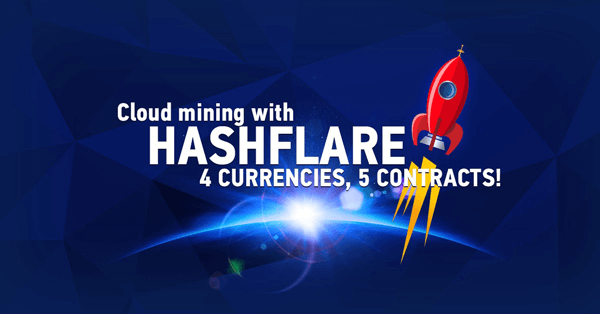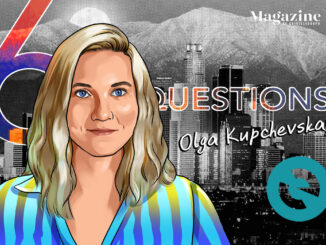
[ad_1]

On February 2nd, at 6:00pm UTC Yearn Improvement Proposal 57 passed mandating that Yearn Finance, the decentralized and permissionless neo-hedge fund where I work, mint 6,666 new YFI tokens.
YFI holders themselves passed this vote, with 83% voting in favor, and the highest engagement since Yearn’s now-mythical fair launch. The effects of this new twist in the story of DAOs — of what may be the most important governance action in the history of DeFi’s most decentralized bluechip so far — are still being written. To me, this changes everything.
Black Holes & Prokaryotes
I was captured by Yearn’s vortex in late July of 2020 — literally on the day the YFI emission stopped. A friend messaged me “buy YFI” and so I took a look.
It was . . . very complicated. Being a nerd, I liked that. But what blew me away, what really set the hook deep, was that the project’s creator, developer Andre Cronje, gave away all of the tokens. All of them. He didn’t keep any or give any to his buds or investors. All 30,000 YFI tokens were distributed to users of his platform over one week. At the time that was millions of dollars. And today, it’s over a billion. A billion dollar gift.
And so I set out to do everything in my power to aid in this effort. I, like so many thousands since, were so deeply inspired that we became instant acolytes at the church of the fair launch. I hung up my earning potential at the door, and got to work.
Quickly I realized that no one was in charge, at least not in the way one would expect. Yearn was a truly decentralized, leaderless, and emergent collective intelligence. While there were leaders marshaling forces, directing energies towards goals, and gating critical resources, there was no org chart, no c-suite, no direct reports, and no HR. So I took on the identity of a flying dinosaur (as one does in these times), and made a role for myself. I knew a few things, so I started doing them. I found myself on the operations team with a rabbit and a glass of milk (the two glorious Russian hackers banteg and milkyklim — big brained Daniel Lehnberg joined us shortly after). Our job was to hold the wheels on the bus while the most talented engineers on the planet shipped code faster than any organization I’ve ever seen.
Every company I’ve ever worked at or owned has the same basic structure, built piece by piece to do a specific job. If companies are like machines, Yearn is more like a cell. It just emerged.
Andre built some kind of new psycho-industrial DNA from whole cloth, and within days a novel metabiology of collective activity emerged from nothing around it. This was the result of the fair launch, the result of a DAO blossoming in the wild without a Swiss foundation or ICO-backed team to shape it. It was pure magic. But in what may be the most fascinating twist of all, this turned out not to be enough.
The fair launch was like the birth of the prokaryote, capable only of sustaining a single-cell—but what Yearn wants to be is more like an ape than an amoeba. For Yearn to function, it needs to be a complex multicellular entity, an eukariote. And for that it needs mitochondria.
But to strip away the metaphors for frens that read slightly less science fiction than I do: what Yearn really needs is a way to process and convert the bubbling enthusiasm and energy in our community into useful work in service of Yearn’s users and YFI-holders. And for that, it needs money.
Enlightened Nerds
Yearn did have money, a lot of it. In August 2020 Yearn paid out $356,000 in dividends to YFI holders staking their tokens in governance — and nothing, literally zero, was going to operations, salaries, or growth. A ragtag team of geniuses was working 24/7 to build Yearn while getting paid nothing. The cost of gas was extraordinary — over a million dollars last year. This and all other expenses were being paid out of pocket by team members.
This was crazy. We saw how unsustainable this was, and so we wrote YIP-41, a proposal that created a treasury of $500,000 and an operating budget of $200,000 per month. And in an inspired move enabling both speed and accountability, this treasury was to be administered by the multisig under the DAO’s discretion. YFI-holders passed it nearly unanimously, with 99.9% voting in favor, establishing a new paradigm of decentralized governance that we call constrained delegation.
YIP-41 was six months ago, in August of 2020. It allowed us to start paying people and to begin forming the essential structures needed to grow Yearn. I received a recurring grant that was about 1/10th of the compensation I earned in my previous employment and it came without any equity or legal protections. Others received even less, like our founder Andre who refused to accept any kind of payment.
Devs like banteg, who could easily start their own projects and make millions, had the same salary I did — maybe half what a junior engineer would get joining Google . . . but for we who cared about something more than money, it was enough.
The souls called into Yearn’s orbit in those early days didn’t come for the money. We could have made more elsewhere, at considerably less effort. But even enlightened nerds need to pay bills.
Brrrr-less & Open Source
Most people in DeFi know the story of how SushiSwap forked Uniswap and built an incredible community-run protocol. A lot has been made of this “vampire attack” — the theory goes that projects without a subsidy token, like uniswap pre-UNI, were vulnerable since someone could fork them, add a token printer on top to brrrrr incentives, and siphon the liquidity with better APY (due to the added token value). Uniswap experienced a vampire attack once and there was uproar. The same thing has been happening to Yearn continuously, ever since YFII launched in August of 2020.
Andre’s founding vision was for YFI tokenomics to be a continuous subsidy for Yearn’s products, but he had relinquished control of the protocol to the community early on so YFI’s total supply was capped at 30,000 until governance decided otherwise. This left us vulnerable. There have been dozens of Yearn vault v1 forks since then, all able to add a token printer on top to drive TVL. Some have added value and innovation, some were scams, and others merely chased clout and wealth creation. That’s DeFi: forking is part of the game, and the moral standing of forkers is as diverse as those of TV vampires.
Where value is added it’s a win for the community. Yearn has merged with Pickle and most recently partnered with Badger—our open source and generous spirit has its benefits. And although we’ve found new avenues to thrive, Yearn has been significantly under-resourced compared to its forks. Some forks have basically infinite brrrr and are offering developers, in one notable case, up to $90,000 per week to work on strategies. Compare that to working for free at Yearn with the hope your strategy will one day earn you a share of the fees.
But like all the minds drawn to Yearn, most of the strategists were seeking something more than money. They were at Yearn to learn and to collaborate, to invent the future of France with the biggest brains in DeFi. Even so, in the face of poaching efforts from competitors, some of them had to make serious financial choices—and who could blame them really? It was up to the Yearn community to make this right.
Buyback & Build
What were we to do? It was January of 2021 and the idiosyncrasies of an emerging decentralized governance process crossed with exuberant community-driven meme jubilee resulted in a fetishistic attachment to the number 30,000. At that time, no one even considered increasing the supply. Our only hope was to redirect more fees to the team and strategists.
We had already embarked on this process with our YIP trilogy: YIPs 51, 52, and 54, which together reformed our vault’s fee structure, increasing the rewards to strategists by twenty-fold and directing more sustainable funding to the core team. But this wasn’t enough. Yearn was allowed a maximum of $500,000 in its treasury while many of our DeFi protocol peers had over a billion—and the forks, our direct competition, had hundreds of millions to spend acquiring talent.
Yearn had the best tech, and the most talented team (I dare anyone to dispute this), and we were shipping faster than ever, but we were losing TVL, and the worst part is that we weren’t able to properly reward the people who had sweat blood for months. We were losing them.
This was the impetus for BABY: Buyback and Build Yearn. Originating from Ryan Watkins from Messari, it was first proposed in October of 2020 to reinvest system fees into growing Yearn rather than distributing them as staking dividends.
That proposal was initially met with a fair degree of skepticism, including from myself and other core team members, but the wisdom is now clear to me. We were too young and, honestly, too poor to be giving out millions a year in dividends, that money would be better spent investing in our team and growing Yearn further. The community agreed, and BABY passed with an overwhelming 99.44% in favor.
The Mint
But the story didn’t end there. While BABY was still in progress, a little-known community member, YFI_LIT, posted an alternative proposal to retain contributors by minting 1,000 new YFI.
Now, it’s important to recall that this wasn’t the first time minting had been suggested. In fact, minting has likely been the most frequently proposed topic on our forum. The ability to mint was approved in Yearn’s very first proposal, YIP-0. Plans were then proposed in YIPs 5, 8, and 30 and then further proposed at least seven times by my quick count. None of these initiatives were able to pass. Ten tries had all failed—one would think that would foreclose the possibility, no?
Nope. DAOs you see, are something new. In traditional dominator hierarchies where top-down processes analyze rising signals and lock in decisions for branching streams of work and humans to execute it, leadership is limited and fragile. A CEO making a decision that had been voted down 10 times before by the board might not last long. But a DAO is the mind between minds, possibilities are endless, and leadership is available to whomever knows how to wield it.
When I first read YFI_LIT’s minting proposal, like most of the team, I was against it. I too had been a host to the 30k only replicator. But then something changed. Another minting proposal popped up. This was wisdom emerging from the collective. There was a voice of leadership rising in the crowd, and it spoke to me. I questioned my beliefs and quickly realized how constrained my mind had been.
Our coauthor from the BABY proposal Ryan Watkins wrote it best:
“While many in the community scoff at inflation because of the industry’s anti-Keynesian intellectual origins, the mentality makes little sense in the context of DeFi protocols. DeFi tokens aren’t money, so why try to limit inflation in favor of a scarcity meme?”
DeFi tokens aren’t money. It was a bit like being hit by lightning. The 30k cap made no sense! Yearn was not bitcoin, it was certainly not the Fed, and the hardcap was an accident. Our thinking had been hijacked by a meme. YFI was always meant to be minted. It just hadn’t been time yet.
Shifting Overton
The same day Ryan published that article I formed the telegram group that would write YIP-57. I asked for Ryan’s help of course, and our ops team, and then we brought in four of the largest YFI holders and yearn supporters: Santiago Santos of ParaFi Capital, Vance Spencer of Framework Ventures, Eli Krenzke of Polychain Capital, and Aleks Larsen of Blockchain Capital. Did I want their votes? Absolutely. YIP-30 had failed due to a large holder changing their mind at the last minute. I wanted buy-in from the start. But more than that, I wanted their help.
Venture Capitalists can get a bad rap—and in many cases deservedly so. But our VCs were dope. They didn’t get a premine and they weren’t seed investors. They farmed or bought it like everyone else. They were community members. Santiago and Vance had been part of our team, doing actual work, showing up to meetings, making shit happen. Real contributors and among the most sophisticated DeFi thinkers out there. They knew better than I how beneficial increasing supply would be.
But even with their tokens we only had a few percent of the supply. Yearn is one of the most decentralized DAOs in existence, no one has enough tokens to overwhelm the collective. And even if we did, that would have fractured the community. It was up to us to make the best argument we could and leave it to the DAO to decide. This is the way.
Over the next two weeks I witnessed what must have been the highest velocity Overton window shift in DeFi’s history. On January 15th the vast majority were anti-mint, but by the time the vote closed on February 2nd, over 80% had voted in favor. During this time Andre and banteg went absolutely ape on twitter. Shitposting like true masters. The rest of us did our best to keep up.
Could mint to 21m. You know, just for the memes. Just saying…
— Andre Cronje (@AndreCronjeTech) January 17, 2021
Price pumped 15%. We can now mint 15% of supply.
Rebase time.
— banteg (@bantg) January 18, 2021
Whatever outcome emerges from this current governance explosion, I think we are cutting through some critical cognitive limitations around yearn and its possibilities.
👇 https://t.co/iBJLVsJLKi
— tracheopteryx.eth (@tracheopteryx) January 16, 2021
Debates inside Yearn’s rats nest of telegram groups were similarly epic. We formed a group called YFI Distribution and invited in anyone who wanted to join—it’s currently at 73 members. Another Yearn group crowd-sourced what was perhaps the most persuasive argument: a comparative analysis of token distributions at other DeFi projects. Seeing those numbers made our situation starkly clear. Their treasuries were over 100x the size of ours, and they all minted.
Core team, critical community members, and complete randos duked it out, covering every angle conceivable. One by one I’d see the same message: I was totally against this to start, but then [insight], and now I’m in support. The power of that cascading realization was deeply invigorating.
Growth
On Friday February 5th, after the 3 day timelock on minting elapsed, 6,666 new YFI were created from thin air. Today that’s worth over $300,000,000.
But YFI is not money. It does have value, but it is a governance token in service of the Yearn protocol and is subject to Yearn’s DAO. YFI-holders get to decide what to do with YFI. We are a messy, gooey, inchoate, gurgling, capital-efficient, decentralized beast literally tearing ourselves away from what has come before.
If you’d never seen a caterpillar, how could you ever predict what it might become? We are the cells. On our own we don’t know how to build a butterfly, but if we ride the chaos together, we will become something grander than any could imagine.
Next, the Stars
The fair launch needed to evolve, and the community made it so. Growth is never smooth, especially into new terrain. Where many see the bumps and bruises on our path as evidence of weakness, I know it to be strength. Were one to compare Yearn to what we know, one will never see it for what it is. The next stage of human collaboration requires completely new thinking to scale beyond the coordination structures of our predecessors.
Up next for Yearn is to transition even further into decentralized leadership. We have proposals in the works to move more decision-making powers off of the multisig’s shoulders and onto a network of autonomous and self-managed teams.
We are building Coordinape, a new system for decentralized grants where the community contributors themselves will decide how to allocate funds. And we are implementing the best concepts from Teal, self-management, and computational social choice theories as new fascia to hold us together.
This space butterfly is ready, my Chads. But we have a lot of work to do. If money is the blood of a collective organism, detailed work remains to grow our circulatory system, musculature, and organ bodies. This is where my true passion lies. I am here because I believe Yearn to be the world’s most advanced decentralized autonomous entity. It is a new life form.
At Yearn we are each leaders. We don’t need permission. All that is needed is for us to separate attraction from aversion, to find their roots within us, and then to look up.
[ad_2]
Source link








 Bitcoin
Bitcoin  Ethereum
Ethereum  Tether
Tether  XRP
XRP  Solana
Solana  USDC
USDC  Dogecoin
Dogecoin  TRON
TRON  Cardano
Cardano
Be the first to comment